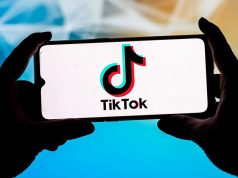No Facebook. No Twitter. No YouTube. With stifling regulations around social media use, how can Australian businesses’ use social media to enter Chinese markets?
The basic premise remains the same – the way in which Chinese consumers engage with social media platforms is not dissimilar to here, nor is their decision-making journey. Needless to say, understanding the landscape is paramount for any company aspiring to capitalise on the booming Chinese economy. It’s certainly an opportunity worth pursuing – this year China’s GDP is estimated to exceed US $12.1 trillion (AUD $14.9 trillion).
An obvious difference from the outset is the sheer volume of online conversations that happen within China’s firewalls. This is not surprising given the 740 million-odd internet users, and is exacerbated by the fact that social media is a much larger phenomenon in Chinese culture than it is here in Australia.
In today’s digital world, this level of activity offers businesses unprecedented access to millions of organic conversations unfolding in the alluring Chinese market – in real time. The million-dollar question is, how can this information be used to help businesses make important decisions about when to launch a product in the market and drive sales?
Givenchy and Mr Bags
A great example of the power of social media in China is the partnership between Givenchy and blogger Tao Liang, better known as Mr Bags. He uses his encyclopaedic fashion knowledge to retain over 2.7 million Weibo readers and a further 600,000 WeChat followers; keen to be ‘in the know’ on the latest handbag trends and the current “it” bag. In an act of extreme commercial nous, in 2017 Mr Bags called for his followers to nominate a potential collaborator for the blogger.
When Givenchy emerged as the overwhelming favourite, the brand took the opportunity to launch a limited-edition handbag on Valentine’s Day via Mr Bags’ social channels. What followed the announcement was a 12-minute frenzy seeing Givenchy part with 1.2 Million RMB’s (AUD $230K) worth of handbags – a complete sell-out. Needless to say, the campaign was deemed a success.
Listen to many, speak to a few
By now it’s no secret that social media isn’t just a broadcast platform. In fact, true to the proverb “we have two ears and one mouth, so we should listen more than we say”, there’s far greater power in using social media to understand a potential customer’s motivations.
In today’s world, social media provides market research on an unprecedented scale.
Once upon a time, businesses invested heavily in market research groups to understand consumer insight. Test groups were enticed with gift vouchers or free products to partake in a fishbowl-style exercise, where they were asked to provide honest and open feedback as eager marketers looked on. Despite questions being developed using the latest, tested methodology and astute moderators, the quality and authenticity of the data was often in question.
Let me be clear – this has less to do with the methodology and more a reflection that as consumers, we find it much easier to speak the whole truth when we think we’re not being watched.
With such a high level of human involvement, it is also incredibly difficult to collect data consistently and without bias.
Technology: the market research disruptor
Why might technology make consumers more honest and open with their feedback? The truth is people are more honest in a casual setting. Therefore, dialogue about a product or service that’s exchanged in the comfort of someone’s home (behind a screen) will often be more candid than their responses to a survey.
At Isentia, Mediaportal’s cloud-based technology trawls video, audio and digital content across more than 4,400 print items, 1750 broadcast items, 62,500 online news sites, 6 million blogs and 300,000 forums. Processing seven million news items each day a rate of 234 stories per second, Isentia’s tech presents meaningful summaries to clients in real-time.
For China enthusiasts, the technology mines over 750,000 WeChat and Weibo posts daily and uses this information to unearth the Mr Bags’ opportunities – the people or issues relevant to specific industries – so that businesses can make informed decisions based on both data and sentiment in foreign markets.
What’s more, the nature of social media means the survey technically never ends. Social media listening provides continued real-time pulse checking and the perfect new product incubator. It’s more than watching @mentions and comments pour in via your social profiles, mobile apps or blogs. If you’re only paying attention to notifications, you’re missing a huge group of people that are talking about you, your brand and your product.
The true value is in tracking conversations around specific topics, keywords, phrases, brands or industries, and leveraging these insights to discover opportunities or create content for those audiences.
Data – a modern marketing must-have
It is now hard to imagine a marketing industry that doesn’t rely on data to inform strategy, new product development and campaigns. Much of what took place in marketing, even as recently as a decade or so back, was based on assumption. We *think* that this product would be of interest to this audience, so we *figured* the best way to tell them about it would be mostly via a TV ad campaign.
But data is now essential for any smart and savvy marketer, and presents the opportunity to tap into foreign markets with a level of insight that has never been more accurate or accessible. When you combine and embrace the use of technology, social media, and analyse the data that it provides – you can not only quickly test and learn new products, but also give the fans what they want.
Givenchy were clever and reaped the rewards of listening, embracing and reacting to their consumers’ want, making it big in China. Now it is your time to get onboard and reap the results.
Sean Smith is Isentia’s Chief Executive Media and Insights. Isentia (ASX:ISD) is APAC’s leading integrated Media Intelligence and Insights business, empowering nearly 4,000 clients in 12 locations to connect the dots between data and decisions. Isentia blends market-leading monitoring experience with analytics to help the world’s biggest brands uncover the whole picture – and act on it. Powered by cutting-edge technology and a team of world class experts, our mission is to help businesses leap forward where only genuine insight can take them.








![The Alchemy of Negotiation with Matt Lohmeyer [FREE REPORT]](https://anthillonline.com/wp-content/uploads/2015/07/Capture-100x75.jpg)
![THE ULTIMATE CASHFLOW CHECKLIST [FREE DOWNLOAD]](https://anthillonline.com/wp-content/uploads/2016/06/james-Seven-simple-strategies-to-cut-costs-04.pdf-Box-2016-06-30-13-49-35-100x75.png)
![How Master the Art of Sales Even if it Makes You Feel All Weird and Icky Inside with Phil Anderson [CHEAT SHEET]](https://anthillonline.com/wp-content/uploads/2015/08/PHIL-ANDERSON-COVER-100x75.png)
![Four principles to creating dedicated customers…or zombie loyalists with Peter Shankman [Free report]](https://anthillonline.com/wp-content/uploads/2015/11/Screen-Shot-2015-11-26-at-11.16.26-100x75.png)
![Five essential ingredients for a humming homepage with James Tuckerman [FREE REPORT]](https://anthillonline.com/wp-content/uploads/2015/07/homepage-checklist-1680-01-copy-100x75.png)
![How to give an awesome presentation that no one will ever forget [VIDEO]](https://anthillonline.com/wp-content/uploads/2013/09/GeorgaiTech-300x350.jpg)
![Dance pony, dance! A dancing shetland pony uses the number one rule of viral videos [VIDEO]](https://anthillonline.com/wp-content/uploads/2013/03/pony-300x350.jpg)

![It’s so hard to find good technical talent these days. [VIDEO] HTML wizard at Vooza](https://anthillonline.com/wp-content/uploads/2013/03/HTMLWizard-300x350.jpg)
![The most epic safety video every made: Air New Zealand [VIDEO]](https://anthillonline.com/wp-content/uploads/2014/10/AirNZ-300x350.jpg)
![5 Ways to get more out of your coffee shop meetings with Antony Gaddie [CHEAT SHEET]](https://anthillonline.com/wp-content/uploads/2015/07/gaddie-3d-cover-01--300x194.png)
![Want more credibility and influence? Unlock the 12 principles of persuasion checklist [FREE DOWNLOAD]](https://anthillonline.com/wp-content/uploads/2016/03/james-persuasion-and-influence-nfsu-02.pdf-Box-2016-03-24-15-09-44-100x75.png)
![Five essential things to get right if you want to raise capital, with Bryan Vadas [FREE CHEAT SHEET]](https://anthillonline.com/wp-content/uploads/2015/08/vadas-3d-cover-01--100x75.png)

![New Zealand’s Xero eyes US IPO, further disruption as subscribers increase [INFOGRAPHIC]](https://anthillonline.com/wp-content/uploads/2014/07/sruuuuujana-212x194.png)
![Ever wonder if your ‘content marketing’ is really just crap? You gotta see this! [INFOGRAPHIC]](https://anthillonline.com/wp-content/uploads/2014/08/content-100x75.jpg)
![7 Business Lessons From Game of Thrones [INFOGRAPHIC]](https://anthillonline.com/wp-content/uploads/2014/10/infographic-games-of-thrones-041-100x75.jpg)
![How to build your own Media Empire… In seven steps with Nathan Chan [INFOGRAPHIC]](https://anthillonline.com/wp-content/uploads/2014/10/Nathan-Chan-Infographic-e1413419529176-100x75.jpg)
![5 Business Lessons From Tinder [INFOGRAPHIC]](https://anthillonline.com/wp-content/uploads/2014/10/Tinder-Elegant-Infographic-100x75.jpg)



